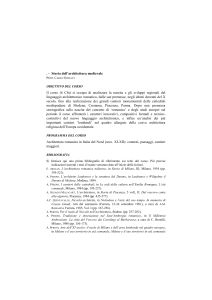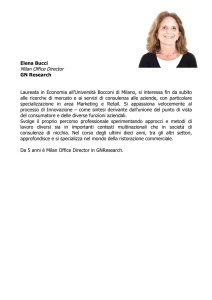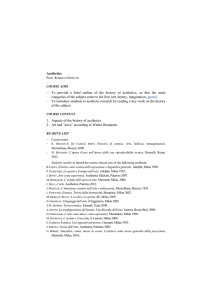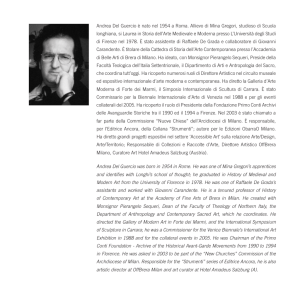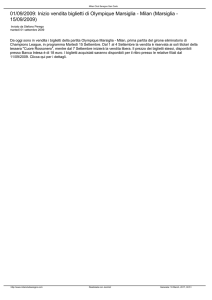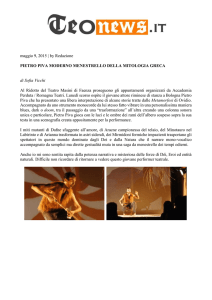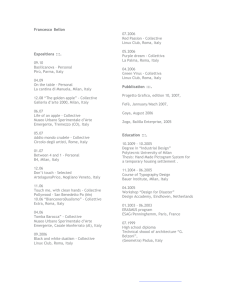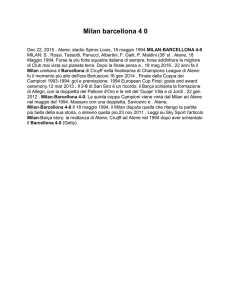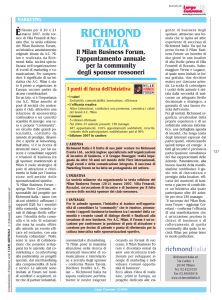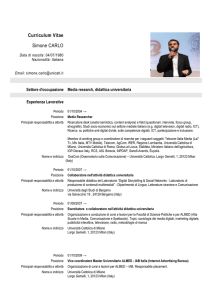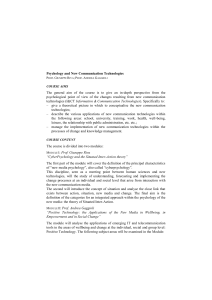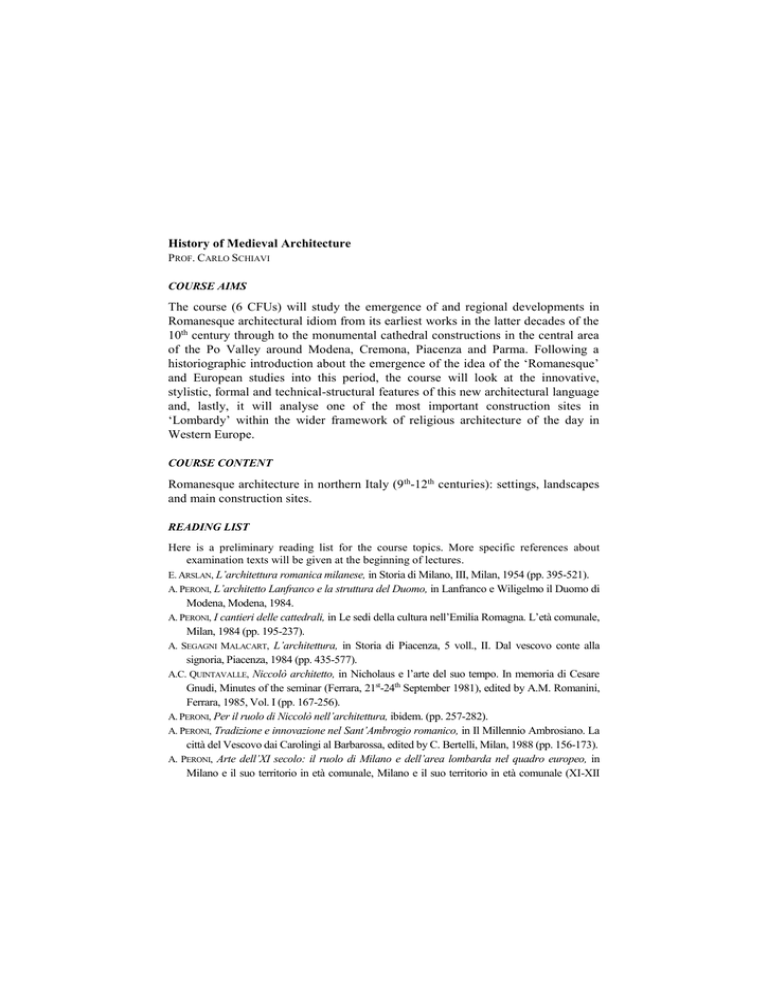
History of Medieval Architecture
PROF. CARLO SCHIAVI
COURSE AIMS
The course (6 CFUs) will study the emergence of and regional developments in
Romanesque architectural idiom from its earliest works in the latter decades of the
10th century through to the monumental cathedral constructions in the central area
of the Po Valley around Modena, Cremona, Piacenza and Parma. Following a
historiographic introduction about the emergence of the idea of the ‘Romanesque’
and European studies into this period, the course will look at the innovative,
stylistic, formal and technical-structural features of this new architectural language
and, lastly, it will analyse one of the most important construction sites in
‘Lombardy’ within the wider framework of religious architecture of the day in
Western Europe.
COURSE CONTENT
Romanesque architecture in northern Italy (9 th-12th centuries): settings, landscapes
and main construction sites.
READING LIST
Here is a preliminary reading list for the course topics. More specific references about
examination texts will be given at the beginning of lectures.
E. ARSLAN, L’architettura romanica milanese, in Storia di Milano, III, Milan, 1954 (pp. 395-521).
A. PERONI, L’architetto Lanfranco e la struttura del Duomo, in Lanfranco e Wiligelmo il Duomo di
Modena, Modena, 1984.
A. PERONI, I cantieri delle cattedrali, in Le sedi della cultura nell’Emilia Romagna. L’età comunale,
Milan, 1984 (pp. 195-237).
A. SEGAGNI MALACART, L’architettura, in Storia di Piacenza, 5 voll., II. Dal vescovo conte alla
signoria, Piacenza, 1984 (pp. 435-577).
A.C. QUINTAVALLE, Niccolò architetto, in Nicholaus e l’arte del suo tempo. In memoria di Cesare
Gnudi, Minutes of the seminar (Ferrara, 21st-24th September 1981), edited by A.M. Romanini,
Ferrara, 1985, Vol. I (pp. 167-256).
A. PERONI, Per il ruolo di Niccolò nell’architettura, ibidem. (pp. 257-282).
A. PERONI, Tradizione e innovazione nel Sant’Ambrogio romanico, in Il Millennio Ambrosiano. La
città del Vescovo dai Carolingi al Barbarossa, edited by C. Bertelli, Milan, 1988 (pp. 156-173).
A. PERONI, Arte dell’XI secolo: il ruolo di Milano e dell’area lombarda nel quadro europeo, in
Milano e il suo territorio in età comunale, Milano e il suo territorio in età comunale (XI-XII
secolo). Minutes from the 11th International Conference on Early Medieval Studies (Milan, 2630/10/1987), Spoleto 1989 (pp. 751-781).
A. SEGAGNI MALACART, L’architettura romanica pavese, in Storia di Pavia, Milan, 1996 Vol. III,
book III (pp. 115-227).
C. TOSCO, Architetti e committenti nel romanico lombardo, Rome, 1997.
P. PIVA, Architettura monastica nell’Italia del Nord. Le chiese cluniacensi, Milan, 1998.
G. LORENZONI-G. VALENZANO, Il duomo di Modena e la basilica di San Zeno, Verona, 2000.
M. ROSSI, La Rotonda di Brescia, Milan, 2004.
L.C. SCHIAVI, Il Santo Sepolcro di Milano da Ariberto a Federico Borromeo, Pisa, 2005.
P. PIVA, L’ambulacro e i «tragitti» di pellegrinaggio nelle chiese d’occidente. Secoli X-XII, in Arte
Medievale. Le vie dello spazio liturgico, edited by P. Piva, Milan, 2010 (pp. 81-129).
Lombardia Romanica. I. I grandi cantieri, edited by R. Cassanelli, P. Piva, Milan, 2010.
Lombardia Romanica. II. I monumenti nel territorio, edited by R. Cassanelli, P. Piva, Milan, 2011.
TEACHING METHOD
Lectures will be accompanied by slideshows of monuments.
ASSESSMENT METHOD
The oral examinations will also include your 25 of images studied during the course
NOTES
Further information can be found on the lecturer's webpage at
http://docenti.unicatt.it/web/searchByName.do?language=ENG or on the Faculty notice
board.

